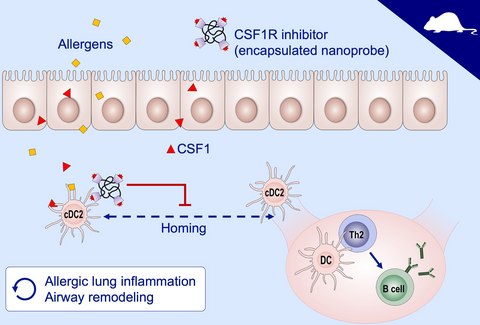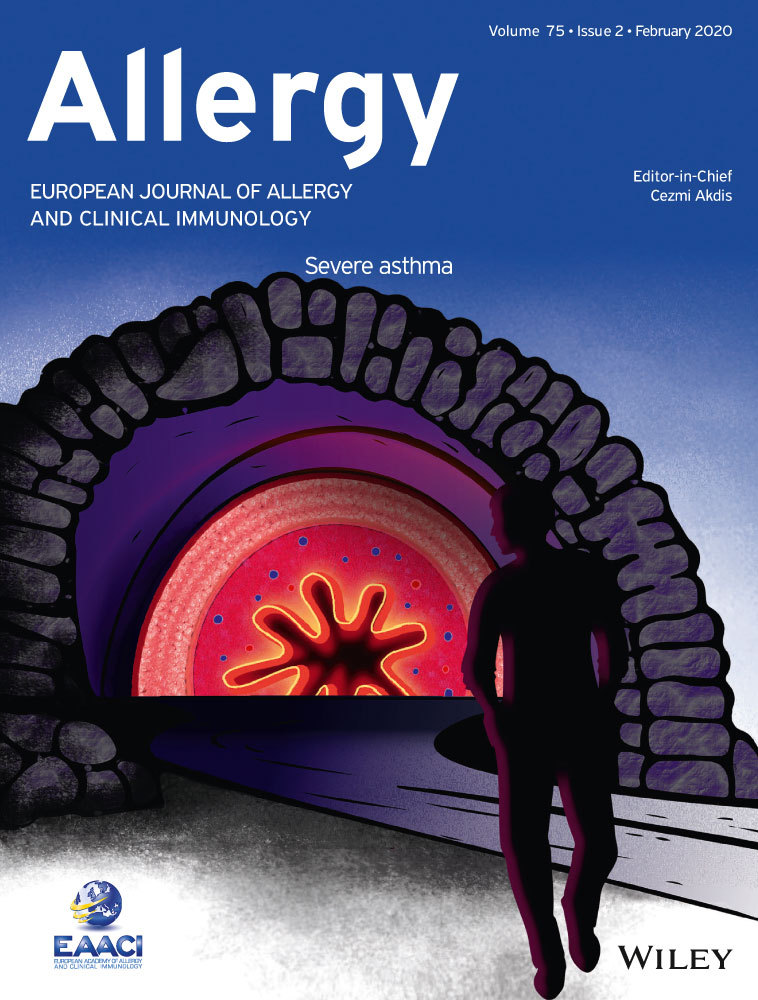Colony-stimulating factor 1 and its receptor are new potential therapeutic targets for allergic asthma
Abstract
Background
A new approach targeting aeroallergen sensing in the early events of mucosal immunity could have greater benefit. The CSF1-CSF1R pathway has a critical role in trafficking allergens to regional lymph nodes through activating dendritic cells. Intervention in this pathway could prevent allergen sensitization and subsequent Th2 allergic inflammation.
Objective
To examine the therapeutic effectiveness of CSF1 and CSF1R inhibition for blocking the dendritic cell function of sensing aeroallergens.
Methods
We adopted a model of chronic asthma induced by a panel of three naturally occurring allergens and novel delivery system of CSF1R inhibitor encapsulated nanoprobe.
Results
Selective depletion of CSF1 in airway epithelial cells abolished the production of allergen-reactive IgE, resulting in prevention of new asthma development as well as reversal of established allergic lung inflammation. CDPL-GW nanoprobe containing GW2580, a selective CSF1R inhibitor, showed favorable pharmacokinetics for inhalational treatment and intranasal insufflation delivery of CDPL-GW nanoprobe ameliorated asthma pathologies including allergen-specific serum IgE production, allergic lung and airway inflammation and airway hyper-responsiveness (AHR) with minimal pulmonary adverse reaction.
Conclusion
The inhibition of the CSF1-CSF1R signaling pathway effectively suppresses sensitization to aeroallergens and consequent allergic lung inflammation in a murine model of chronic asthma. CSF1R inhibition is a promising new target for the treatment of allergic asthma.
Graphical Abstract
Genetic manipulation or pharmacological inhibition of the CSF1-CSF1R signaling pathway suppresses allergen sensitization and lowers the production of allergen-specific serum IgE. Inhibition of the CSF1-CSF1R pathway reverses established chronic allergic inflammation and airway remodeling. Intranasal delivery of CSF1R inhibitor carrying nanoprobes has efficacy and shows favorable pharmacokinetics without significant adverse effects. CSF1, colony stimulating factor 1
CONFLICT OF INTEREST
HM and GYP have filed a provisional patent application related to the submitted manuscript.





